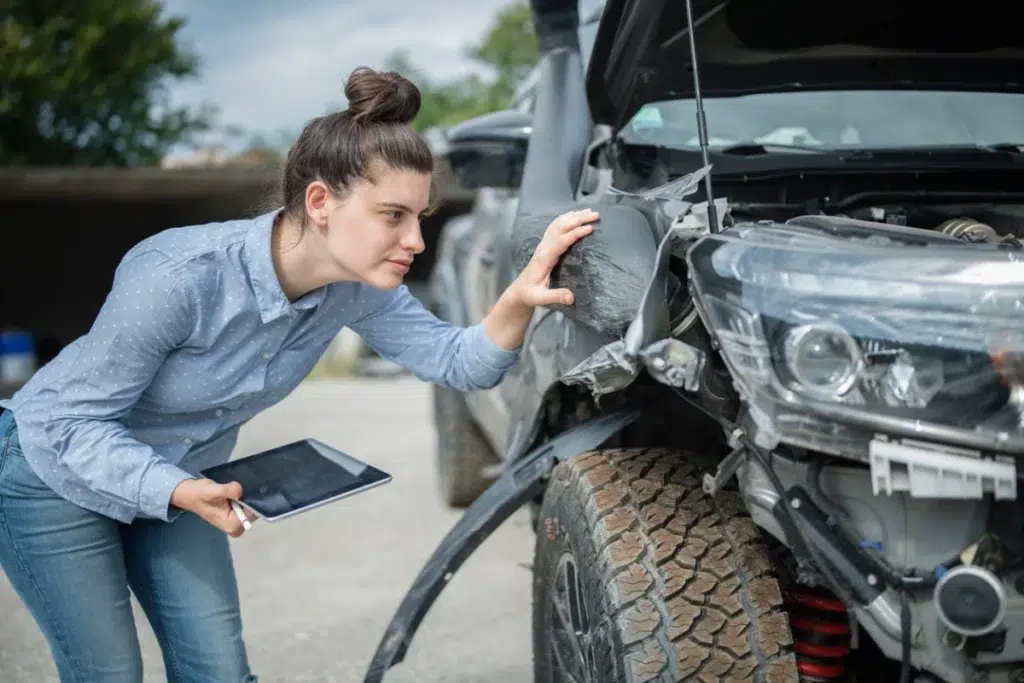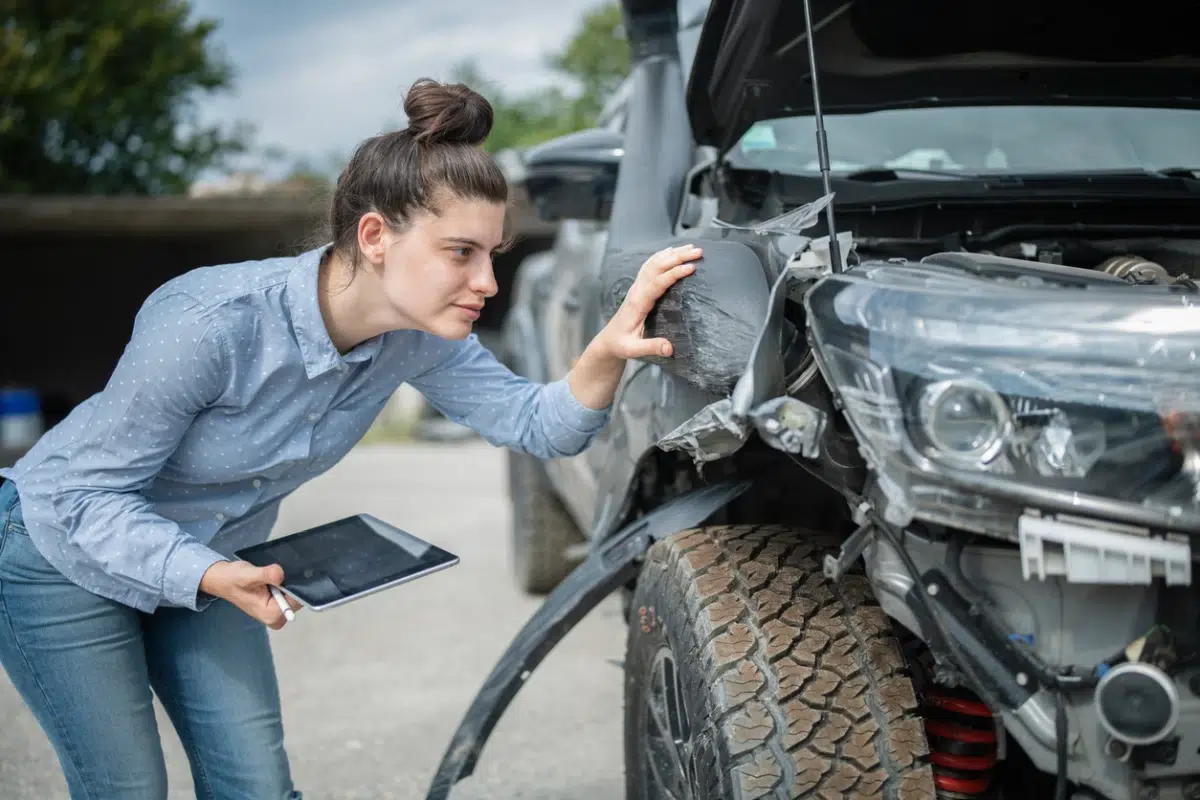
Car accidents can be overwhelming. Between managing medical appointments, vehicle repairs, and insurance claims, it’s easy to feel lost, especially if you’re wondering how to settle a car accident claim without an attorney. A car crash can have serious legal and financial implications, making it important to understand your options for securing fair compensation after such an incident. While many believe that hiring a lawyer is mandatory, it’s entirely possible to navigate the process on your own, especially in less complicated cases.
In this simple guide, you’ll learn the essential steps to settle a car accident claim yourself, understand when legal help might be necessary, and find practical tips for negotiating directly with insurance companies.
For residents in California, especially in areas like San Francisco, car accident victims have clear avenues to seek compensation for their injuries and damages. If you’re in San Francisco or anywhere in California and want to learn more about your rights after a crash, we encourage you to explore our car accident resources or reach out for a free consultation with our experienced personal injury lawyers.
Understanding the Car Accident Claim Process
Before diving into the “how-to,” it’s important to have a foundational understanding of what a car accident or vehicle accident claim entails. A car accident claim typically involves multiple parties: you (the claimant), the at-fault driver, and their insurance company.
A car accident injury claim specifically refers to seeking compensation for injuries sustained in a vehicle accident. It is crucial to file your claim in a timely manner, as there are statutes of limitations, and to provide thorough medical documentation to support your case. Essentially, it’s a formal request made to an insurance company for compensation to cover losses resulting from a car accident. These losses can include property damage (to your vehicle and other belongings), medical bills, lost income due to time off work, and sometimes, pain and suffering.
The process generally involves:
- Reporting the accident: Notifying the police and your insurance company.
- Investigation: The insurance company (or companies if multiple parties are involved) will investigate the accident to determine fault and the extent of coverage.
- Damage and Injury Assessment: Documenting all vehicle damage and physical injuries.
- Demand and Negotiation: You will present your claim, and the insurance adjuster will review it, potentially leading to negotiations.
- Settlement: If an agreement is reached, you’ll receive compensation.
- Litigation (if no settlement): If a fair settlement cannot be agreed upon, the next step would typically involve legal action, which is usually when an attorney becomes indispensable.
Knowing these general phases will help you anticipate what’s next as you handle your accident claim.
Step 1: Assessing Your Car Accident Case: Is DIY an Option for You?
The first crucial step is to objectively assess whether your case is suitable for handling without legal representation. Not all car accident claims are created equal.
Situations Where You Might Confidently Settle Without an Attorney:
- Minor Property Damage Only: If the accident only involved minor damage to your vehicle and no injuries to yourself or others, managing the claim yourself is often straightforward.
- Clear Fault (and it’s not yours or is minimal): If the other driver was clearly at fault (e.g., they ran a red light and there’s a police report confirming this) and their insurance company isn’t disputing liability.
- Minor Injuries with Full Recovery: If you sustained minor injuries (e.g., bruises, slight whiplash) that required minimal medical attention and from which you’ve fully recovered without long-term consequences.
- You Are Comfortable with Research and Negotiation: Settling a claim requires patience, organization, and a willingness to communicate effectively and assertively with insurance adjusters.
- The Insurance Company is Being Reasonable (Initially): Sometimes, the adjuster is cooperative, and the initial offers seem fair.
Tip: When speaking with insurance companies, police, or other parties after an accident, avoid admitting fault. Even casual statements can be used against you and may impact your ability to recover compensation. Protect your legal and insurance interests by sticking to the facts and not discussing who was at fault.
Step 2: Gauge the Strength of Your Car Accident Case
Before you start negotiating with insurance companies or submitting claims, it’s critical to evaluate the strength of your case. To assess your car accident case thoroughly:
- Gather All Relevant Information: This is paramount. Collect police reports, your notes from the accident scene (including the other driver’s information and insurance details), photos/videos of the scene and vehicle damage, and any witness contact information.
- Review Your Insurance Coverage: Understand your auto insurance policy. What are your coverage limits for collision, comprehensive, medical payments (MedPay), and especially uninsured motorist coverage (UM/UIM)? Knowing your liability coverage is also important. If the at-fault driver is uninsured, you may need to file a claim with your own insurance company to seek compensation for your damages.
- Determine the Extent of Your Injuries and Damages:
- Vehicle Damage: Get repair estimates from reputable auto body shops. If your car is totaled, research its fair market value (Actual Cash Value – ACV).
- Medical Expenses: Compile all medical bills related to the accident – emergency room visits, doctor’s appointments, physical therapy, prescription costs, etc. Consider future medical needs if your recovery is ongoing. Differentiate between minor injuries, which might involve a few check-ups, and serious injuries that have long-term implications. Traumatic brain injuries, for example, are considered severe injuries and can necessitate extensive and costly lifelong care.
- Lost Wages: Document any time missed from work due to the accident or your injuries. Obtain a letter from your employer detailing your pay rate and missed days.
- Pain and Suffering (General Damages): This is more subjective but compensates for physical pain, emotional distress, and loss of enjoyment of life. For minor claims handled without an attorney, this is often calculated using a multiplier method (e.g., 1.5 to 5 times your special damages – medical bills and lost wages), depending on severity and duration.
- Identify the At-Fault Driver: Ensure you have the correct information for the at-fault driver and their insurance company. This is usually found on the police report or information exchanged at the scene.
- Keep Meticulous Records: From day one, maintain a file (physical or digital) with every piece of paper, email, photo, and note related to your accident and claim. This includes specific costs such as medical bills and physical therapy receipts, which are crucial for recovering compensation for all your losses.
Before accepting any settlement, carefully consider all potential personal injury claims related to the car accident. Be aware that signing a release as part of a settlement typically prevents you from pursuing further claims for the same incident.
Step 3: Collecting Evidence for a Car Accident Claim: Building Your Case
Strong evidence is the backbone of any successful car accident claim, whether you have an attorney or are handling it yourself. The more thorough and organized your evidence, the better your chances of securing fair compensation.
At the Accident Scene (if possible and safe)
- Photos and Videos: Take extensive photos and videos of the accident scene from multiple angles, including vehicle positions, damage to all involved vehicles, skid marks, traffic signals, road conditions, and any relevant landmarks. Capture close-ups of the damage to your car.
- Witness Information: If there are witnesses, politely ask for their names and contact information. Their statements can be invaluable, especially if fault is disputed.
- Exchange Information: Get the other driver’s name, address, phone number, driver’s license number, license plate number, and insurance company name and policy number. Be sure to specifically obtain the at-fault party’s insurance details, as you will need this information for your records and for any future communications or claims with the at fault party’s insurance company. Provide your information as well.
- Note Details: Write down everything you remember about how the accident happened, the time, weather conditions, and any statements made by other parties. Do this as soon as possible while your memory is fresh.
Post-Accident Evidence Gathering
- Police Report: Obtain a copy of the official police report. This document often contains the officer’s assessment of fault, diagrams of the accident, witness statements, and details of any traffic laws violated. This can be critical evidence, especially if violations of traffic laws are documented.
- Medical Records and Bills: Request copies of all medical records related to your injuries from every healthcare provider you’ve seen. Keep every bill, receipt for prescriptions, and documentation for any assistive devices (crutches, braces). These are essential for your insurance claim.
- Proof of Lost Wages: As mentioned, get a letter from your employer detailing your regular pay, hours/days missed, and total lost income. If you’re self-employed, gather documents like tax returns, invoices, or P&L statements to demonstrate lost earnings.
- Vehicle Repair Estimates/Valuation: Get at least two, preferably three, itemized repair estimates from different body shops. If your car is deemed a total loss, research its Actual Cash Value (ACV) using resources like Kelley Blue Book (KBB) or Edmunds, considering its condition, mileage, and options before the crash.
- Proof of Other Expenses: Keep receipts for any other accident-related expenses, such as rental car costs (if not directly covered by insurance), towing fees, or out-of-pocket costs for damaged personal items that were in your vehicle.
- Injury Journal: Document your injuries beyond just the medical records. Keep a daily or weekly journal detailing your pain levels, physical limitations, emotional state, impact on your daily activities (e.g., inability to do chores, play with children, participate in hobbies), and sleeplessness. Photos of visible bruises or scars as they heal can also be useful.
- Communication Log: Keep a detailed record of all communications with the insurance company. Note the date, time, name of the person you spoke with, and a summary of the conversation for every phone call. Save all emails and letters. This log is essential for your insurance claim and will be invaluable during settlement negotiations and when reviewing any settlement offer.
The evidence you meticulously collect will form the basis of your demand letter and support your position during negotiations.
Step 4: Negotiating with Insurance Companies Without a Lawyer
This is often the most intimidating part for individuals choosing to handle their car accident claim. Insurance adjusters are professional negotiators; their goal is to settle claims for the lowest amount possible to protect their company’s bottom line. However, being prepared, informed, and assertive can level the playing field.
Key Steps in Negotiation
- Calculate Your Minimum Settlement Figure: Before you even speak to an adjuster about numbers, determine the absolute minimum amount you would accept. This figure should cover all your documented economic damages (medical bills, lost wages, property damage) and a reasonable amount for pain and suffering if applicable. Don’t reveal this number to the adjuster.
- Prepare and Send a Demand Letter: Once you have all your evidence and have completed medical treatment (or have a clear prognosis for future treatment), you will write a formal demand letter to the insurance adjuster.
- This letter should clearly state that you are seeking compensation for the accident.
- Describe the facts of the accident (date, time, location, how it happened, why the other party was at fault).
- Detail your injuries and medical treatment received. Itemize all your economic damages (medical bills, lost wages, property damage) and include copies of supporting documents.
- Explain your pain and suffering and justify the amount you are claiming for it.
- State the total amount of compensation you are demanding. Make this initial demand higher than your minimum acceptable figure to allow room for negotiation.
- The Adjuster’s Initial Offer: Expect the adjuster’s first offer to be low, often significantly lower than your demand. Don’t be discouraged; this is a standard negotiation tactic.
- Evaluate the Offer and Respond: Thank the adjuster for the offer, but calmly state that it’s not acceptable. Provide a point-by-point rebuttal, explaining why the offer is too low by referring back to your evidence and the specific damages you’ve incurred. For example, “Your offer doesn’t fully cover my documented physical therapy costs, which were necessary for my recovery,” or “It doesn’t adequately compensate for the two weeks of lost wages I experienced, as verified by my employer.” If the adjuster disputes liability or the severity of your injuries, counter with your evidence (police report, medical records, injury journal).
- Be Patient but Persistent: Negotiation can take time. There might be several rounds of offers and counter-offers. Remain polite but firm. Don’t be afraid to follow up if you haven’t heard back within a reasonable timeframe.
- Highlight Emotional Points (If Applicable and Genuine): Briefly mention how the accident and your injuries have impacted your daily life, family, or ability to enjoy hobbies. This can sometimes influence the adjuster, particularly for pain and suffering damages.
- Know When to Hold Firm and When to Compromise: If the adjuster isn’t budging and their offer remains significantly below your documented losses and reasonable expectations for pain and suffering, you’ll need to decide whether to continue negotiating, seek mediation (if available), or consider consulting an attorney. However, if the adjuster makes a reasonable offer that meets your calculated minimum and fairly covers your damages, be prepared to accept.
- Get Everything in Writing: Once you reach a verbal agreement, insist on receiving the settlement offer in writing before you sign any release forms. This document should clearly state the amount of the settlement and what it covers.
Note: Accepting a settlement may prevent you from making future claims related to the same accident. Make sure the settlement fully covers all your current and potential future losses or damages before agreeing, as you may not be able to pursue additional compensation later.
Step 5: Filing Your Claim and Settlement Offers
After submitting your claim with supporting evidence:
- If you are seeking compensation for injuries, you are typically filing a personal injury claim. Be sure to include all relevant damages, such as physical, financial, and emotional losses.
- The insurance company will review and make an offer.
- Evaluate if the offer covers your medical bills, lost wages, and pain and suffering.
- If the offer is too low, you can negotiate or demand a higher amount.
Example Scenario
Consider Jane, who was rear-ended in San Francisco and suffered a minor whiplash injury. She collected her medical bills, police report, and repair estimate, then negotiated directly with the insurer. After presenting her evidence, she increased the insurer’s initial offer by 30% without hiring an attorney.
Step 6: When to File a Car Accident Lawsuit
If negotiations fail or the insurance company refuses fair compensation, you may need to file a lawsuit. An auto accident lawyer can help maximize your settlement, ensure you recover full damages, and protect your rights throughout the claims process.
- Serious Injuries: If you or any passengers sustained severe injuries, such as broken bones, traumatic brain injuries, significant scarring, or injuries requiring ongoing medical treatment or surgery. Calculating future medical expenses and long-term impact is complex, and experienced attorneys can help navigate these challenges.
- Disputed Fault: If there’s a disagreement about who caused the accident, or if you’re being unfairly blamed, consulting a knowledgeable attorney with experience in car accident cases is crucial.
- Uninsured or Underinsured At-Fault Driver: Dealing with your own uninsured/underinsured motorist coverage can be tricky, and sometimes your own insurer can become adversarial. Car accident lawyers have specialized expertise in handling these situations and a track record of securing compensation for victims.
- Multiple Parties Involved: Accidents involving several vehicles or potentially liable parties (e.g., a commercial truck, a government entity) introduce layers of complexity that experienced attorneys are equipped to manage.
- The Insurance Company is Stalling, Denying, or Lowballing: If the adjuster is uncommunicative, denies a valid claim, or makes an offer that is clearly insufficient to cover your documented losses, professional help is likely needed.
- You Feel Overwhelmed or Unsure: If the process feels too stressful or confusing, the peace of mind an attorney provides can be invaluable. Many offer a free car accident lawyer consultation in San Francisco and other areas.
What if You Can’t Settle? Understanding the Role of a Car Accident Attorney
While this guide focuses on how to settle a car accident claim without an attorney, it’s equally important to recognize when professional legal help might be necessary or highly beneficial. There are certain circumstances where the expertise of a car accident lawyer can significantly impact the outcome of your claim.
What a Car Accident Lawyer Does
An experienced car accident attorney does much more than just file paperwork. They can:
- Investigate the Accident: Lawyers often have resources to conduct more in-depth investigations, including accident reconstruction if needed.
- Gather and Preserve Evidence: They know precisely what evidence is needed and how to obtain it legally and efficiently.
- Accurately Value Your Claim: Personal injury lawyers are skilled at calculating all aspects of your damages, including future medical expenses, long-term lost earning capacity, and the full extent of pain and suffering, which can be particularly complex for severe injuries.
- Navigate Complex Legal and Insurance Issues: They understand the nuances of California law, insurance policies, and how to counter tactics used by insurance companies. This is especially true if you’re dealing with issues like an at-fault driver who is uninsured or an underinsured driver.
- Negotiate with Insurance Companies: Lawyers are experienced negotiators who aren’t intimidated by insurance adjusters. They can often leverage their knowledge and experience to secure higher settlements than individuals might on their own, even after accounting for legal fees.
- Handle All Communications: They take over the stressful communications with insurance companies and other parties involved.
- File a Lawsuit if Necessary: If a fair settlement cannot be reached, an attorney can file a car accident lawsuit and represent you in court.
- Connect You with Medical Experts: They often have networks of medical professionals who can provide treatment and expert opinions on your injuries.
Filing a Car Accident Lawsuit: When Negotiations Fail
The goal of this guide is to help you settle your claim without going to court. However, if you’ve diligently pursued a settlement, presented strong evidence, and the insurance company still refuses to offer a fair amount, filing a car accident lawsuit might be your only remaining option to recover just compensation.
This is almost invariably the point where you will need to hire a car accident lawyer if you haven’t already. Navigating the legal system, court procedures, rules of evidence, and litigating against experienced insurance company defense attorneys is not a DIY endeavor.
Why Choose Delfino, Green & Green?
If you find yourself in a situation where navigating your car accident claim in San Francisco or Northern California becomes overwhelming, or if you believe the insurance company is not treating you fairly, the experienced team at Delfino, Green & Green is here to help.
For decades, our dedicated personal injury attorneys have been advocating for the rights of car accident victims. We understand the tactics insurance companies use to minimize payouts, and we have a proven track record of securing substantial settlements and verdicts for our clients.
Here’s why individuals choose Delfino, Green & Green:
- Experience and Expertise: Our lawyers have specialized knowledge in California car accident law and a deep understanding of how to build strong cases.
- Client-Centered Approach: We prioritize our clients’ needs and well-being, offering compassionate and personalized legal support. You’re not just a case number to us.
- Aggressive Representation: We are tenacious negotiators and skilled litigators, prepared to fight for the maximum compensation you deserve, whether at the negotiating table or in court.
- Proven Results: Our history of successful outcomes speaks for itself. We are committed to achieving the best possible result for every client.
- No Fee Unless We Win: We operate on a contingency fee basis, meaning you pay no attorney fees unless we recover compensation for you.
While handling a minor claim on your own can be empowering, don’t hesitate to reach out for professional legal counsel when the stakes are high or the complexities increase. Contact Delfino, Green & Green for a free, no-obligation consultation to discuss your car accident case and learn how we can assist you.



